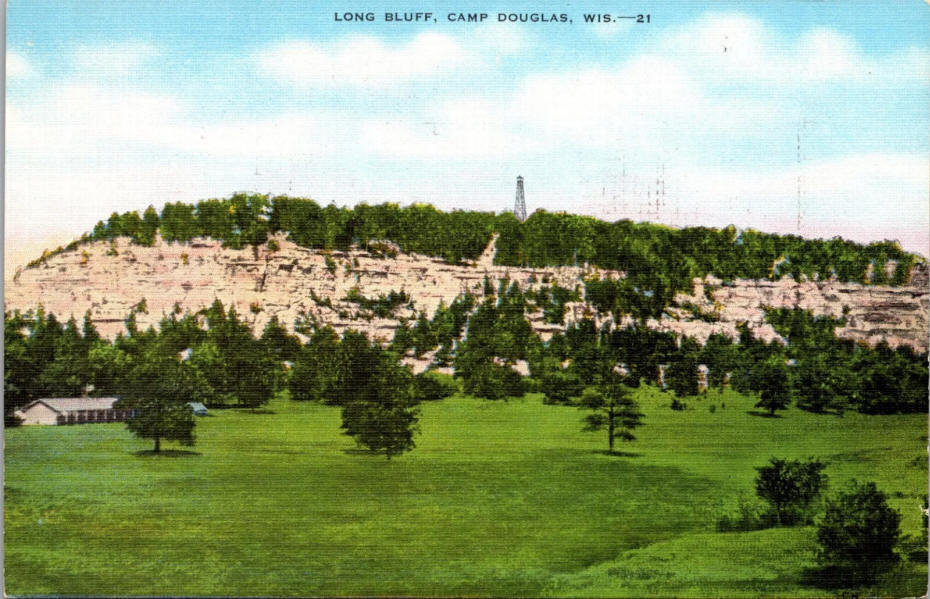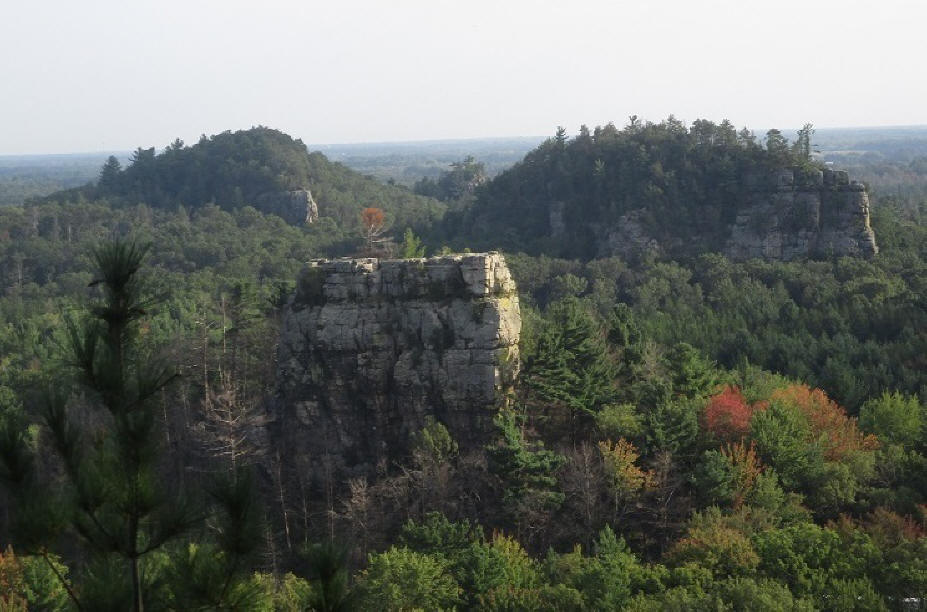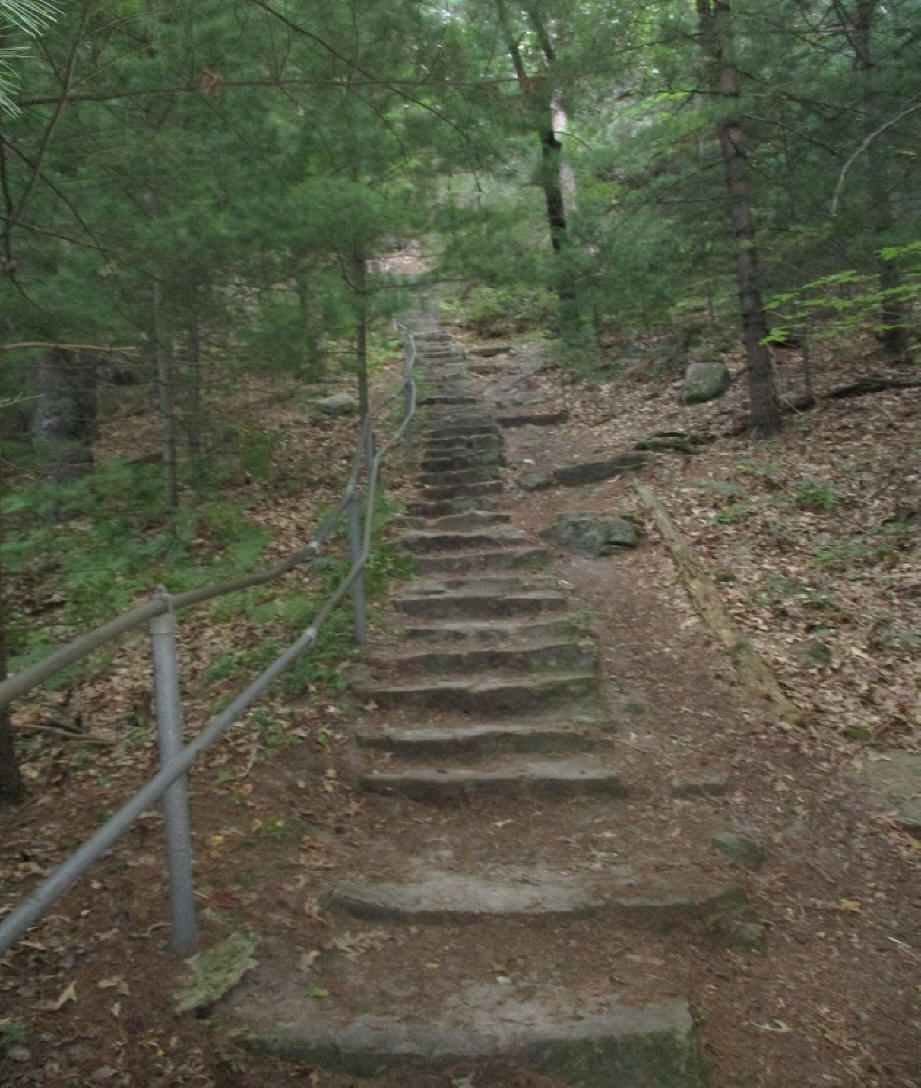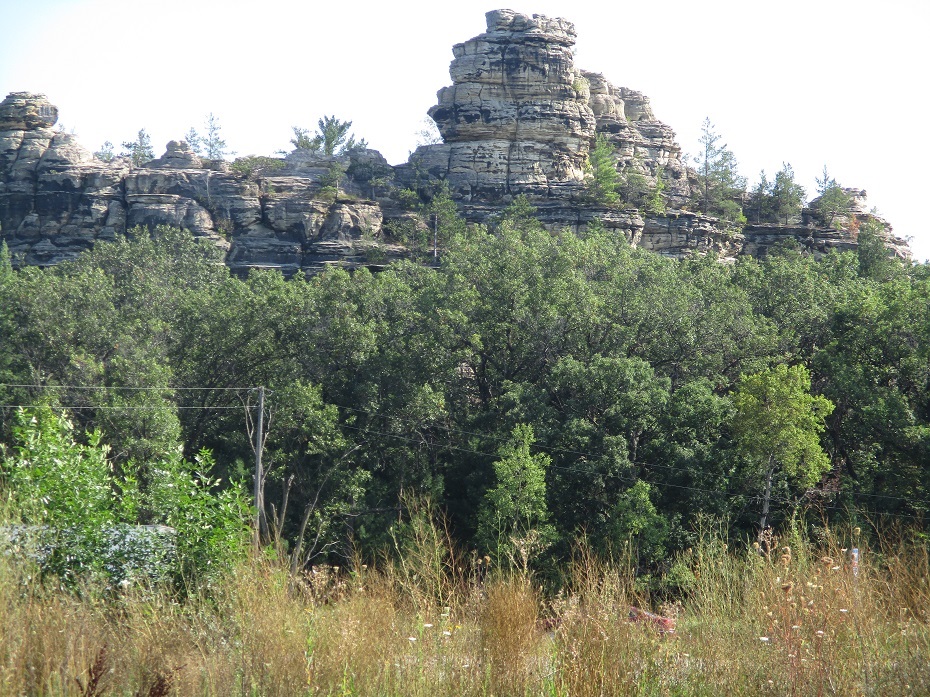Mill Bluff
State Park - Mesas and Buttes in the Midwest
Story by
Tom Straka
Photographs by Pat Straka

Many wonderful historical and
natural sites are hidden along major highways.
Mill Bluff State Park in
Central Wisconsin is one of them. It is a spectacular
landscape, typical more of the American West, with vistas of
mesas, buttes, and pinnacles.
It isn't really that hidden, as Interstates 90/94 on
the route between Chicago and Minneapolis, pass right
through it near Camp Douglas, just before splitting up. The
interstate only provides a glimpse; the vistas are worthy of
a stop and considerable climb for a breathtaking view.
Mill Bluff State
Park has three types of formations. The large bluffs are
called mesas and the smaller, sheerer bluffs are called
buttes. The slender and even more sheerer bluffs are called
pinnacles.
The
geology of the area is
interesting. The park is part of the Upper Midwest's
Driftless Region, an area the
glaciers missed, and which time has allowed to form an area
of beautiful ridges and valleys. The last glacier may have
missed the area; however, the last stage of glaciation did
impact the future park. At that time the Wisconsin River was
blocked near Wisconsin Dells, and formed huge glacial Lake
Wisconsin, which covered a large expanse. The park was
within that expanse and many of the mesas and butts were
islands in the glacial lake, while others were underwater.
The side of the rocks were quickly eroded by wave action,
forming the bluffs.
The bluffs are flat-topped,
with cliffs on the side. This results from a cap of more
resistant sandstone, with weathering tending to break off
the rock in vertical fragments. The bluffs range from 80 to
200 feet in height. Erosion slowly wears away the underlying
soft sandstone, and eventually the weight of the overlying
rock cap results in it shattering and falling. Over an eon,
the mounds will diminish until the entire cap is eroded,
resulting in a conical hill which will blend into landscape.
The bluffs contain rocks and boulders of different
compositions than he local bedrock. These are called
erractics. They were embedded in icebergs that floated into
the bluffs and lodged into their sandy flanks.
The tall buttes of Mill Bluff
were landmarks for settlers traveling west through Wisconsin
and are often mentioned in their journals or diaries. Today,
the beautiful scenery and buttes arouse traveler's curiosity
to stop in for a closer look.
The park has ten named bluffs
and several contain petroglyphs. Mill Bluff Trail is a 1.1
mile loop which includes the top of Mill Bluff with an
observation deck. That sounds short, but includes a wickedly
steep incline to get to the top. The trail to the top
involves 223 stone steps, constructed in the 1930s by the
Work Progress Administration.

A classic vista from the
observation deck atop Mill Bluff.


The climb up to the top of Mill
Bluff is as steep as it looks and 230 steps quickly add up,
but are definitely worth the effort.
There is a road system in the
park which provides access (at least visual access) to the
many bluffs. The bluffs look quite different close-up. Plus,
the trails are an outdoor adventure in themselves. The park
is not huge, so trail lengths are all fairly short.

Wildcat Bluff, vista from the paved
road. One of the smaller bluffs.

It is fairly easy to get close to
the base of several bluffs. They look pretty impressive
standing at the base too.
Castle Rock is adjacent to the
park and right off the main highway. It can't be missed. It
is a well-known rock formation in the state and should not
be missed.

Castle Rock

Author/Photographer. Tom Straka is an
emeritus professor of forestry at Clemson University. He has
an interest in history, forestry and natural resources,
natural history, and the American West. Pat Straka is a
consulting forester and the photographer on most of their
travel articles. They reside in South Carolina, but have
also lived in Mississippi and Virginia.
Public Disclosure
Please Read
FTC has a law
requiring web sites to let their readers know if any of the
stories are 'sponsored' or compensated. We also are to
let readers know if any of our links are ads. Most are not.
They are just a way to direct you to more information
about the article where the link is placed. We have several ads
on our pages. They are clearly marked as ads. I think
readers are smart enough to know an ad when they see one but to
obey the letter of the law, I am putting this statement here to
make sure everyone understands. American Roads and Global
Highways may contain affiliate links or ads. Further, as their
bios show, most of the feature writers are professional travel
writers. As such we are frequently invited on press trips, also
called fam trips. On these trips most of our lodging, dining,
admissions fees and often plane fare are covered by the city or
firm hosting the trip. It is an opportunity to visit places we
might not otherwise be able to visit. However, no one tells us
what to write about those places. All opinions are 100% those
of the author of that feature column.



